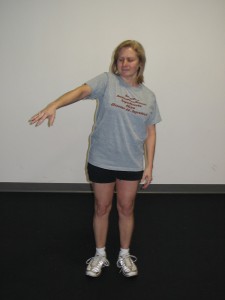Brian Schiff’s Blog
Injury Prevention, Sports Rehab & Performance Training Expert
I have been rehabbing rotator cuff injuries for the better part of 13 plus years now. I also have the privilege of teaching fitness boot camps, educating other fitness pros on training/rehab and training athletes. One of the most common issues I encounter in my work is rotator cuff pathology (tendinitis, tears, etc.).
I have sold well over 10,000 copies of my Ultimate Rotator Cuff Training Guide (e-book and print versions) since its release in 2004. While most of the training methodology is still sound today, I wanted to add some new content and tweak a few progressions. Like anything, with time you gain more experience and wisdom.
In addition, many people were asking me for the DVD version to better understand how to perform the exercises. So at last, I have released the DVD version. Some of the new additions include:
- Soft tissue mobility exercises
- Self assessment screening tools
- Integrating a towel roll with rotation exercises
In addition to the DVD itself, you get a companion CD-ROM with my Self Stretching Guide, personal interview on rotator cuff injuries, my 60 minute rotator cuff explained power point and audio seminar, the entire updated rotator cuff e-book, and 5 second video clips of each the particular exercises in the rehab plan.
I am selling this product for $49.95, but until next Wednesday (June 16) you can get it for only $29.95.
Click here to see a sample clip from the DVD
If you decide to grab a copy, simply use the code BFITCUFF (all caps) at checkout and be sure to hit apply to get credit for the coupon. You can order at www.brianschiff.com.
This DVD is ideal for people with acute or chronic nagging shoulder pain related to bursitis, scapular imbalances, rotator cuff tendinitis and rotator cuff tears. As always, I offer a 60 day money back guarantee on all my products. If you have any questions, simply post them on the blog.
Here’s to happier and healthier shoulders!
If you have ever experienced shoulder pain (whether sudden or chronic) you have probably heard people or docs throw out the terms tendinitis, bursitis, or partial and full thickness tears. In this post, I will attempt to summarize these and delineate as best I can between the symptoms you may experience.
Bursitis – inflammation of the subdeltoid bursa (fluid filled sac) beneath the deltoid. Bursae are in place to cushion the soft tissue and prevent rubbing or friction. They lie between tendon and bone or between the tendon and skin. In the shoulder, signs of bursitis include:
- Pain and tenderness along the upper arm with radiating pain down the to the elbow in many cases
- Pain lying on the affected shoulder (esp. at night)
- Pain with repetitive motion (especially overhead and behind the back)
- Warmth and swelling along the middle deltoid
Tendinitis – the tendon itself becomes inflamed and swollen (usually the supraspinatus) and may become trapped or start rubbing beneath the acromion (top of the shoulder blade) and then becomes an impingement problem (known as impingement syndrome). Pain may also be felt along the biceps tendon as it may undergo undue stress and strain in relation to a cuff issue. It is also important to note that bursistis often accompanies tendinitis. Typical symptoms include:
- Point tenderness at or near the top of the shoulder or over the biceps tendon as it meets the shoulder
- Pain and joint soreness along the front of the shoulder
- Pain that worsens with elevating the arm above 90 degrees or moving it away from or behind the body
- Pain with lying on the affected shoulder
- Pain tucking in your shirt, fastening a bra or styling your hair
Tear – defined by a disruption in the quality or integrity of the muscle and or tendon. Tears are typically quantified by the location (articular or bursal side) size (in centimeters) and degree (partial or full thickness). Not all tears are created equal – that is a fact.
I have seen small tears (less than 1-2 cm) create equisite pain and dysfunction, while large tears (greater than 3 cm) may produce less pain and limitations in daily activities for folks. Hallmark symptoms of a tear include:
- Pain at night that interrupts sleep
- Persistent dull ache or even throbbing pain that is not affected by rest or positional changes
- Significant weakness or even muscle atrophy (look at the shoulder blade from behind or int he mirror)
- Loss of elevation and arm rotation overhead and behind the back
- A positive shrug sign (see below as excessive upper trap work that compensates to elevate the arm in light of a torn rotator cuff muscle)

Positive Shrug Sign
Some research suggests up to 90% of tears will worsen over time. Tears do not spontaneously heal. With that said, many respond well to conservative rehab with an emphasis on restoration of motion, appropriate strengthening and avoidance of abusive activity.
The prescription for healing bursitis and tendinitis is much the same. However, catching the “itis” early on and using ice, rest and anti-inflammatory medication as prescribed can often cure it in weeks and prevent further damage. Pain shouldreally guide all activity and exercise progression. The other forgotten friend is ice – whether acute or chronic I advise daily icing for pain relief.
Want more answers to rotator cuff issues? Visit my site at www.rotatorcufftraining.com.

